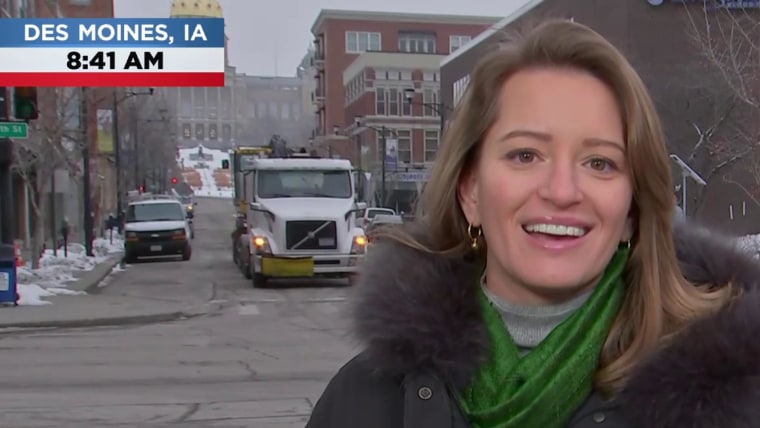The Iowa caucuses, the first primary contest of the 2020 election cycle, begin this week. Here's what you need to know:
When are the Iowa caucuses?
Monday, Feb. 3, starting at 8 p.m. ET (7 p.m. local).
Who participates?
Eligible voters who will be at least 18 by Election Day can participate in the caucuses. To participate in a Democratic or Republican caucus, you must be registered with the appropriate party; same-day registration is available at precinct caucus locations.
What might turnout look like?
Iowa Democrats are preparing for turnout to exceed the party record from 2008, when nearly 240,000 Iowans participated in the caucuses.
Where does it all happen?
There are a total of 1,679 precincts that will meet to caucus. The Democratic Party in Iowa will also hold a number of "satellite" caucuses (60 in state, 24 out of state and three international — in Tbilisi, Georgia; Glasgow, Scotland; and Paris, France) for those who are unable to travel to a caucus location.
How many delegates are at stake?
There are 41 pledged delegates up for grabs in the Democratic race, plus an additional eight unpledged (superdelegates) from Iowa. (Whenever we refer to delegates for the Feb. 3 precinct caucuses, we actually mean precinct delegates to county caucuses. After county conventions are congressional district and state conventions, at which the real national convention delegates are selected.)
Let our news meet your inbox. The news and stories that matters, delivered weekday mornings.
OK, but how does this actually work?
Democrats and Republicans hold their caucuses differently.
Democrats move around the caucus site — for example, supporters of former Vice President Joe Biden will gather in one corner and backers of Sens. Bernie Sanders of Vermont and Elizabeth Warren of Massachusetts others. At most Democratic caucus locations, a candidate must get support from at least 15 percent of attendees to achieve viability. If that threshold isn't met, a candidate's supporters must realign to a different viable candidate or join with other nonviable groups to form a viable preference group. (One of those preference groups could be "uncommitted.") And the number of delegates awarded at each caucus site is determined by a mathematical formula. So get out your calculators!
In a change from past Democratic caucuses, the party will release three sets of results: "the first expression of preference" before the realignment, the "final expression of preference" after realignment and state delegate equivalents (the number used to determine the "winner" in past results). The final expression number — rather than the first expression — is used to determine who gets delegates and who doesn't.
All of the numbers will be released at the same time.
Another change: Only members of nonviable groups will be allowed to realign. In the past, candidates who had initially hit 15 percent could lose supporters in the realignment. But for this cycle, the initial 15 percent support gets locked in.
Unlike the Democrats, Republicans select their candidate via a simple secret ballot. There is no shuffling from one corner of the caucus site to the other. There is no 15 percent viability or realignment. And there's no mathematical formula to determine delegates awarded at each caucus site.
With President Donald Trump receiving nominal GOP opposition, however, the Republican process in Iowa isn't as important to follow this presidential cycle.
This has been controversial in the past, right?
Yes. The last two election cycles in Iowa have resulted in controversy on caucus night. On the Republican side in 2012, Mitt Romney was named the early winner, but a closer — and later — examination revealed that Rick Santorum had won by a mere 34 votes.
And on the Democratic side in 2016, Hillary Clinton edged Sanders by just 0.3 percentage points, with Sanders supporters citing counting and reporting irregularities.
So, how will we know who wins?
The activity on caucus night is electing delegates in each of Iowa's 1,679 precincts to the county convention. But the Democratic "winner" is the candidate who accrues the most state delegate equivalents after the realignment process.
The Iowa Democratic Party says there will be more than 2,000 delegates to the district and state convention. So if you see that Joe Biden gets 35 percent on caucus night, that means he won 35 percent of these state delegate equivalents.
"how" - Google News
February 03, 2020 at 04:39PM
https://ift.tt/2OniKd0
What is the Iowa caucus process: How does the Iowa caucus work? - NBC News
"how" - Google News
https://ift.tt/2MfXd3I
Bagikan Berita Ini


















0 Response to "What is the Iowa caucus process: How does the Iowa caucus work? - NBC News"
Post a Comment